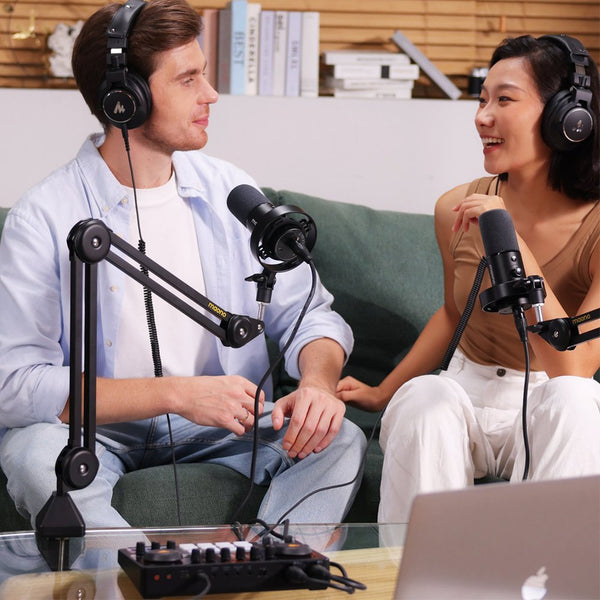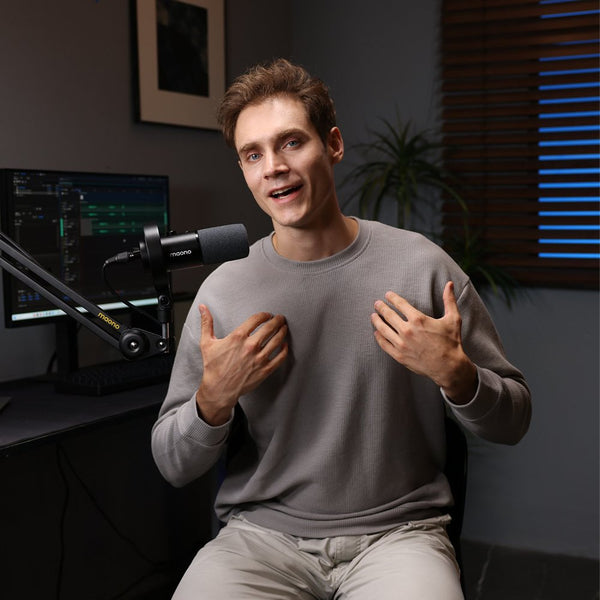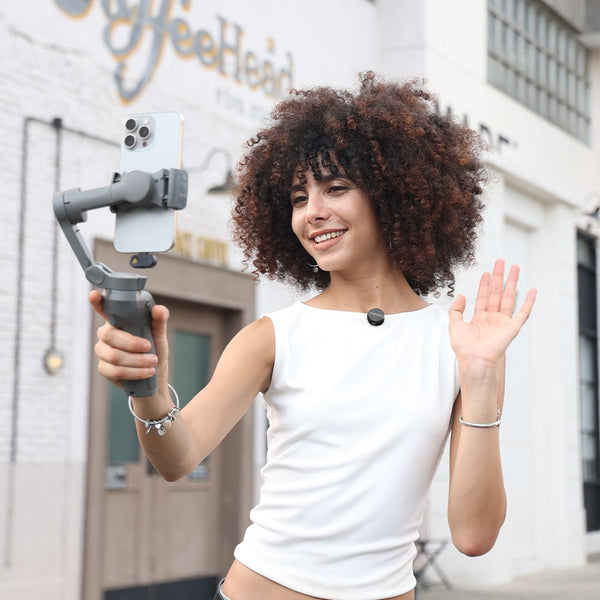I remember the time when I first listened to this horror podcast. It was in 2020, and I immediately got hooked because of the narrator’s storytelling talent. His voice is so clear when he narrates the details, and he can even change his voice to match different characters, as if multiple people are speaking in a dialogue.
What we loved most about this podcast is how the narrator describes Asian Filipino culture and brings to life the myths and beliefs in sorcery, witches, mangkukulam, aswang, mambabarang, and more.
Whether the stories are fictional or based on real-life horror, we truly enjoy listening to his podcast. That’s right—aside from me, my family and even our friend got hooked on this show called “Ang Pinuno” (English: “The Leader”).
We listen to this podcast every time we eat together as a family, while cooking, and even before going to sleep. It’s relaxing to hear the narrator’s clear voice, and most of the time, we fall asleep listening to his stories. I wonder what type of podcast microphone the narrator is using—perhaps even a wireless microphone or a Lavalier microphone for more mobility during recording.
How about you? What’s your favorite podcast on YouTube? Do you also want to start your own horror podcast? If yes, then keep reading.
There’s something uniquely chilling about horror podcasts, especially when consumed through YouTube. With visuals, atmospheric sounds, and unsettling narrations, YouTube horror podcasts take fear to another level. Whether you're a long-time listener or an aspiring creator, understanding what makes these shows so gripping—and how to launch your own—can lead you deep into the heart of the horror community.
This article explores why horror podcasts are more terrifying on YouTube, highlights the most spine-tingling shows available, and offers a step-by-step guide to starting your own. We’ll also answer popular questions about production, atmosphere, and gear—like why the Maono PM422 podcast microphone and Maono Wave T5 are perfect for horror podcasting.
Why Horror Podcasts Are More Terrifying on YouTube
While traditional audio-only horror podcasts have their allure, YouTube adds another dimension: visual storytelling. From subtle animations and eerie images to dynamic soundscapes, YouTube horror podcasts stimulate multiple senses, creating immersive fear.
Unlike just listening, watching horror content can:
-
Make sound effects feel more visceral (like footsteps or whispers).
-
Add tension through video cuts, flickering visuals, or atmospheric lighting.
-
Involve storytelling cues like facial expressions and pacing that deepen the narrative.
This sensory layering turns simple ghost stories into full-blown horror experiences.
Top 5 Horror Podcasts on YouTube You Shouldn’t Miss
If you’re looking to dive into YouTube’s horror scene, start with these must-listens:
-
The No Sleep Podcast
Originally a Reddit community, this podcast evolved into a well-produced horror anthology. With gripping voice acting and cinematic sound design, it adapts disturbing short stories from across the internet.
-
Unexplained Encounters
This podcast focuses on real-life paranormal accounts. Whether it's haunted houses or cryptid sightings, listeners submit spine-tingling encounters narrated with suspense and fear-building pauses.
-
Chilling Tales for Dark Nights
Combining professional voice actors, eerie music, and shadowy visuals, this horror anthology series offers a wide variety of tales—from modern horrors to classic urban legends.
-
Scary Stories Told in the Dark
Hosted by Otis Jiry, this anthology features terrifying stories, often from independent horror writers. The deep-voiced narration and background ambiance are perfect for late-night scares.
-
Scott Sigler Slices: SLAY Season 3
An episodic horror series blending fiction, action, and supernatural terror. Sigler’s unique storytelling format is great for fans of serialized horror with a twist of sci-fi and suspense.
How to Start Your Own Horror Podcast on YouTube
Starting your own horror podcast may seem daunting, but it’s entirely doable—even with minimal gear. Here’s a simple roadmap:
-
Choose Your Horror Niche
Decide if your show will focus on fiction (e.g., original scary stories), nonfiction (e.g., true crime or paranormal), or a mix of both. -
Write or Source Your Script
Well-written stories make or break a horror podcast. Write original scripts or gather stories from public submissions or Reddit (with permission). -
Invest in Quality Audio
Horror podcasts rely heavily on tone and atmosphere, so clean sound is non-negotiable. The Maono PM422, a USB cardioid condenser podcast microphone with a boom arm, is perfect for detailed vocal narration. For mobile or outdoor storytelling, the Maono Wave T5 or Maono Wave T1 Mini wireless microphone systems provide convenience and clarity.
You can also try a lavalier lapel microphone for hands-free operation, especially if you’re moving around while recording. The lavalier wireless microphone system is also ideal for creators who film outdoors or on the go. For desktop users, a lavalier microphone PC option offers a discreet and compact setup, and a lavalier microphone set provides everything you need to get started.

-
Record and Edit
Use software like Audacity, Adobe Audition, or GarageBand. Add ambient sounds, music, and sound effects to build tension. -
Add Visuals
Combine your audio with imagery—such as animations, stock videos, or minimalist spooky designs—to give your podcast a cinematic edge. -
Upload and Promote
Optimize video titles, descriptions, and thumbnails for SEO. Promote on social media and horror communities like r/nosleep or YouTube horror forums.
What Makes a Great Horror Podcast: Script, Voice, or Music?
The best horror podcasts strike a balance between storytelling, vocal delivery, and sound design.
-
Script
A well-paced, original story with twists or emotional weight sticks with listeners. Suspenseful build up is key.
-
Voice
The narrator’s voice must match the mood—calm and cold, or panicked and raw. A good cardioid microphone pickup pattern helps isolate voice from background noise for professional quality.
-
Music/Sound FX
Use subtle music to enhance mood, not overpower. Effects like distant thunder or a door creaking elevate realism.
Tip: Microphones with a cardioid dynamic microphone design like the Maono PM422 capture clean, focused vocals. This microphone cardioid pattern is especially useful when recording in untreated rooms or noisy areas.
FAQ Section
1. What are the most popular horror podcasts on YouTube right now?
Top picks include The No Sleep Podcast, Scary Stories Told in the Dark, and Chilling Tales for Dark Nights.
2. Are there horror podcasts that focus on true crime and the paranormal?
Yes! Podcasts like Mr. Ballen and Unexplained Encounters blend ghost stories with real criminal investigations.
3. Which YouTube horror podcast has the best sound design?
The No Sleep Podcast is renowned for its immersive audio and use of cardioid microphone tech to create studio-quality fear.
4. What horror podcast has the scariest ghost stories?
Many fans recommend Mr. Ballen for real-world horror, and Scary Stories Told in the Dark for fictional ghost tales.
5. Are there horror podcasts that mix fiction and real-life accounts?
Yes, some shows combine dramatic retellings of real events with fictional twists—like Unexplained Encounters.
6. Why do people love listening to horror podcasts at night?
Quiet environments enhance immersion. Darkness heightens tension, making sound effects and stories more intense.
7. Do horror podcasts on YouTube offer a different experience than audio-only platforms?
Absolutely. The visual element adds depth and a more cinematic atmosphere.
8. What makes you keep coming back to a specific horror podcast?
Consistency, originality, quality narration, and believable sound effects.
9. How do horror podcast hosts create a creepy atmosphere using just their voice?
By controlling pace, tone, and silence. Whispers or pauses can be more terrifying than screams.
10. How do horror podcasts record high-quality audio for YouTube?
With good mic placement, soundproofing, and using mics like the Maono PM422 with cardioid microphone pickup pattern for noise isolation.
11. How do YouTube horror podcasts edit sound effects for maximum fear?
They layer subtle effects and time them with narration to build suspense. Silence is also used to create tension.
12. What video editing techniques do horror podcasts use for visual storytelling?
They use overlays, filters, transitions, and minimal motion graphics to maintain focus on the story.
13. How can I start a horror podcast on YouTube with minimal equipment?
Start with a good USB cardioid pickup pattern microphone, basic audio software, a free video editor, and royalty-free visuals.
14. What’s the best microphone for recording horror podcasts?
The Maono PM422 is an excellent choice for voiceovers. For portable setups, try the Maono Wave T5 or Wave T1 Mini wireless microphone—both offer reliable, interference-free audio for field storytelling.

Conclusion
Horror podcasts on YouTube are more than just scary stories—they’re fully immersive experiences that blend voice, music, and visuals to provoke genuine fear. Whether you're a fan seeking new shows to binge or a creator ready to launch your own spine-chilling series, the platform offers endless potential.
With the right tools, including a cardioid condenser podcast microphone like the Maono PM422 and reliable wireless microphones such as the Wave T5, Wave T1 Mini, or a Lavalier microphone set, your podcast can achieve professional-grade quality without breaking the bank. Focus on great storytelling, compelling delivery, and atmospheric sound, and you’ll have horror fans hooked.
So dim the lights, press record, and start crafting your nightmare-fueled masterpiece—your audience is waiting.



